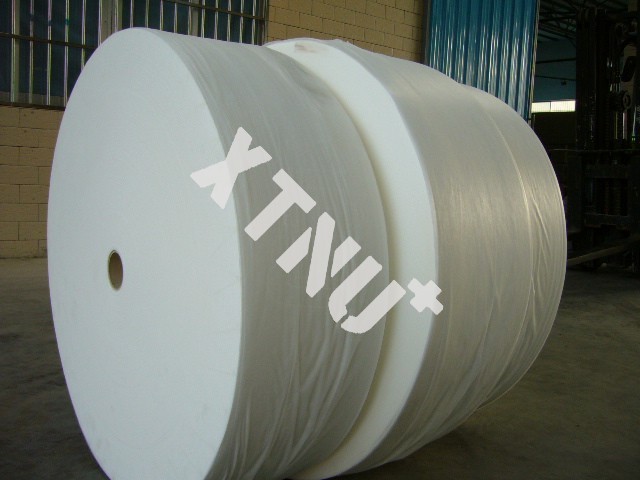
principles of fabric formation
1. The fabric weft is caused by the following reasons:
a) Potential internal latitudinal skew internal stresses due to fabric twist, tension, and structure;
b) The left and right pressures of the rolls are different, or the guide rolls and the drying cylinders are uneven or uneven, the sizes of the straight passes are not the same, or they are not parallel to each other;
c) Cloth silk light suction part; hot air tenter high-speed hot air part; each machine platform expansion bending roller, when the fabric running, the middle and edge of the different resistance and tension;
d) The speed of the cloths, needles, and all three sides are not equal;
principles of fabric formation
e) irregular latitudinal deviation caused by uneven tension in the rope-like processing;
f) During the weaving process, the warp weft is caused by the different tensions on the two sides of the fabric;
g) Irregular weft due to irregular weaving and weaving.
Round fabric cross-fabric is difficult to trim. Due to the multiple cycles between the veil paths, the cross-web spacing is only about 3cm to 5cm, and it cannot be opened. The fading process will also generate a lot of expenses. Grasp the causes and analysis methods of the fabric crosspieces, look for the objective real factors that form cross-products, so as to prevent and reduce the occurrence of cross-file defects and reduce accidental economic losses.
1
principles of fabric formation
Causes of formation of fabric crosspieces
Spinning mill
(1) Factors such as the origin, lot, color, whiteness, performance, cotton maturity, and micronaire value of spinning raw materials are affected by the difference in raw material quality and can cause fabrics to cross.
(2) The use of raw materials for transitional batch processing is not
properly handled. In particular, when the quality of batches of raw
materials that are approved for batches differs significantly from the
previous batch, the longer the transition time, the smaller the
increment of input raw materials for batches of batches, resulting in a
lower probability of fabric cross-overs. The reverse is more.
principles of fabric formation
(3) Raw materials of different origins, different batches, and different specifications are mixed unevenly. Mixing of raw materials with different components of blended blends will cause fabric cross-webs.
(4) Mixing of raw materials There are generally two methods of blending and blending, blending and mixing of blended fibers, and blending ratios are more accurate. However, to control the unevenness of the weight of the combed slivers, if necessary, add it to the process, which is an important factor in controlling the accuracy of the blending ratio.
(5) When packing on the cotton platform, pay attention to uniform packing, cut high fill, especially the lap of the Baotou Baotou is not easy to mix unevenly, to use for rewinding. Rewinding, returning, and returning flowers should be uniform in the longitudinal direction. Grasping cotton beaters should be diligently grasped less, and the cotton picking machine operating rate should be kept above 92%.
principles of fabric formation
(6) When the raw material blending and blending method is adopted, under the condition of no multi-bin blender, if necessary, secondary coiling is performed. The upper, middle, and lower layers of the cotton layer are once rolled, and the uniform discharge is required to make different fibers. Mixing will be more fully consistent; or add a blending process, pre-mixed raw materials into packages, and then on the charter, into the flower cleaning process.
(7) When the mixed fiber mixing method is implemented, the feeding positions of the different fiber slivers must be fixed and the position and structure of the various fibers in the sliver should be kept the same.
(8) In the production of multi-component blends of more than three types of fibers, a combination of blending and mixing may be adopted. After a portion of the fibers are mixed and mixed into strips, the blended fiber is mixed with another fiber to ensure that the multi-component fibers are uniformly mixed.
(9) Produce the same variety, arrange the production of equipment of the same model, keep the consistency of the process, and avoid the difference in the quality of the cotton yarn due to the difference of the model and the inconsistent process. Different models of equipment to produce the same type of cotton yarn, mixed in the same circular knitting machine, due to the weight of the cotton yarn deviation, twist, dry, hairiness, etc. There are some differences, the cloth will appear cross file, especially the light fabric fabric is more obvious.
(10) When the cotton yarn weight deviation exceeds 3.5% or more, and the blending ratio difference is greater than 2.5%, and two or more similar yarns are used together, the bleaching cloth will have a distinct rung. When the twist difference is more than 4%, a cloth crosspiece may also appear on the bleached or dyed cloth surface.
(11) During the use of various equipment, it must be clearly differentiated. All kinds of finished products and semi-finished products shall be classified and stored. Mixing, mixing, and mixing shall be strictly prohibited, so as to eliminate the fabric crosspiece caused by quality accidents of wrong and wrong products.
Knitting factory
principles of fabric formation
(1) It is not used according to the sequence of cotton yarn production date, mixed batch, mixed factory use. Pretreatment management was confusing, singe quality was poorly controlled, and batches and production dates were not marked after singeing.
(2) The operator is not allowed to operate properly, the yarn is wrongly replaced, the yarn is replaced by the wrong one, and the wrong yarn is worn after the head is broken. The spandex elastic filament is not repaired after the filament is broken.
(3) The equipment is in poor operating condition and the equipment debugging status is not good. The sinker, the sinker triangle, and the knitting needle have a serious wear and the center of the needle is poor.
(4) The tension of the bobbin yarn is inappropriate, resulting in a regular fabric cross-section. The yarn feeder disc and the yarn feeder of the circular machine are in poor condition, which will cause a wider cloth cross-web.
(5) During the use of spandex elastic filaments, there were missing threads, broken threads, reversed threads, and double threads. The size of the spandex filaments of the same rounding machine was inconsistent and the difference was large, resulting in inconsistent spandex filament tension. The regular and widely spaced fabric crosspieces are closely related to the uneven tension of the spandex spandex yarn.
(6) In the production process of the circular machine, there is an inconsistent size of the yarn coil, and where the coil is large, the density of the fabric may be large, whereas the fabric density is small.
(7) The yarns in circular woven fabrics are horizontal patrols, and the longitudinal defects are mostly caused by knitting needles. Generally, there is no direct relationship with the yarn quality.
(8) The clutch installation position is different, the yarn feeding speed is different, and the cloth crosspiece is more likely to occur.
-
2023-04-21
What is the main adv…
What is the main advantage of …
-
2023-04-21
Are nonwovens washab…
Are nonwovens washable and bre…
-
2023-04-21
Where are nonwoven f…
Where are nonwoven fabrics use…
-
2023-04-21
Are nonwoven fabrics…
Are nonwoven fabrics environme…
-
2023-04-21
What are the raw mat…
What are the raw materials for…
